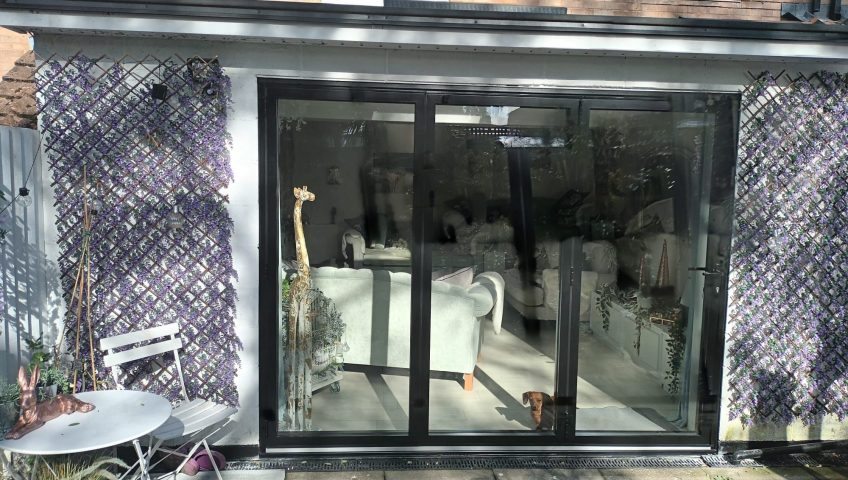When it comes to creating a seamless connection between your home and garden, few features make as much impact as glazed doors. Both bi-folding doors and sliding doors offer sleek, contemporary solutions that flood interiors with natural light and bring the outdoors in.
Yet, while they may serve a similar purpose, the way they operate and the effect they create are distinctly different. Choosing between the two depends on your lifestyle, space, and aesthetic preferences.
Design and Functionality
Bi-folding doors (or bi-folds) consist of multiple panels that fold back on themselves, concertina-style, to one or both sides of an opening. When fully open, they create an expansive, uninterrupted entryway that effectively removes the barrier between your home and garden.
This design is ideal for homeowners who love entertaining or enjoy an open, airy atmosphere during warmer months.
In contrast, sliding doors operate along a simple track system, with large panes that glide horizontally behind one another.
They don’t fold away completely, but they do offer a clean, modern look with minimal framing and expansive glass panels — perfect for showcasing panoramic views.
Space Considerations
One of the biggest practical differences lies in how each system uses space. Bi-folding doors require more clearance to open, as the panels stack to the side. If you have limited wall space or furniture nearby, this can sometimes restrict placement or movement.
However, their ability to open the entire width of a wall is a major advantage for creating a true indoor–outdoor flow.
Sliding doors, on the other hand, are more space-efficient. Because they move along a fixed track, there’s no need for extra clearance. This makes them particularly suited to smaller patios, balconies, or rooms where you want to preserve every inch of usable space.
Views and Light
When closed, sliding doors generally provide a more uninterrupted view thanks to their larger glass panels and slimmer sightlines.
They maximise natural light and give the feeling of living within the landscape – a key reason why they’re often chosen for modern, minimalist homes with scenic surroundings.
Bi-folding doors have slightly thicker frames due to the multiple panels and hinges, which can break up the view a little. However, the trade-off is their flexibility: you can open as many panels as you like to control ventilation and access.
Thermal Efficiency and Security
Both options can offer excellent thermal performance and security when professionally installed and double or triple glazed.
Modern systems come with advanced weather sealing, thermal breaks, and multi-point locking mechanisms.
Sliding doors often have slightly better insulation because they have fewer gaps and sealing points, but high-quality bi-folds are more than capable of keeping your home warm and secure.
Aesthetic Appeal and Cost
From a design standpoint, bi-folding doors tend to suit traditional or contemporary homes seeking versatility and a dynamic indoor–outdoor experience.
Sliding doors are often favoured for ultra-modern properties, where clean lines and uninterrupted glass are key design features.
In terms of cost, both can vary depending on size, material, and glazing. Generally, bi-folds are slightly more expensive due to their complex folding mechanisms, but the choice should ultimately come down to how you plan to use the space.
The Verdict
If you want to open your living space completely to the garden and love entertaining outdoors, bi-folding doors are hard to beat.
If panoramic views, a minimalist aesthetic, and efficient use of space are your priorities, sliding doors may be the better option.
Whichever you choose, both promise to elevate your home with natural light, contemporary style, and a stronger connection to the world outside.

